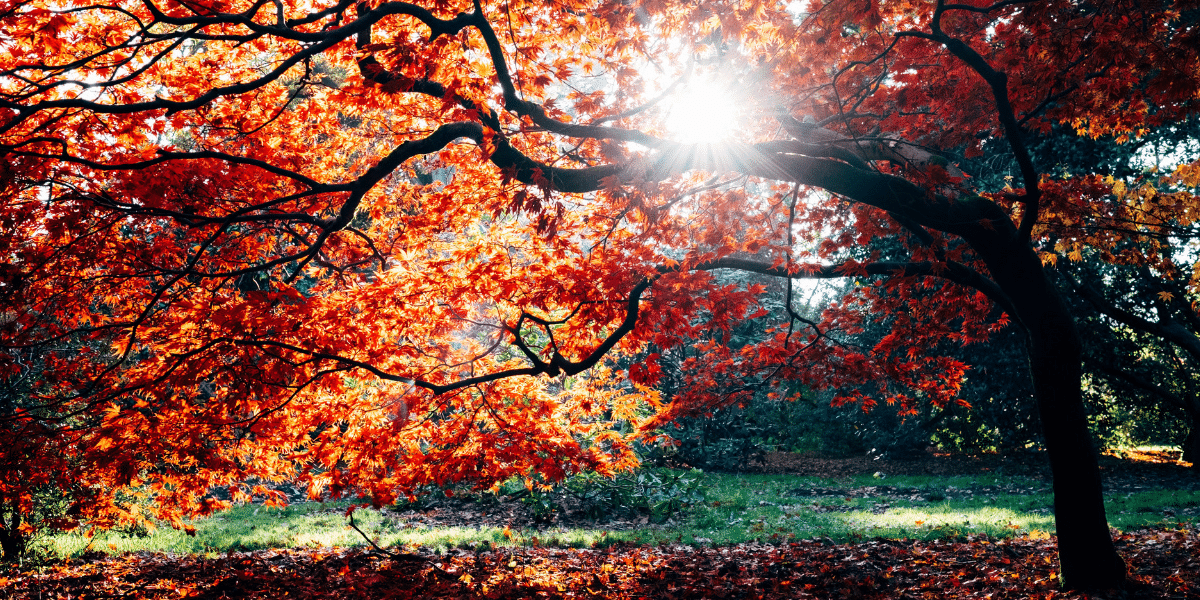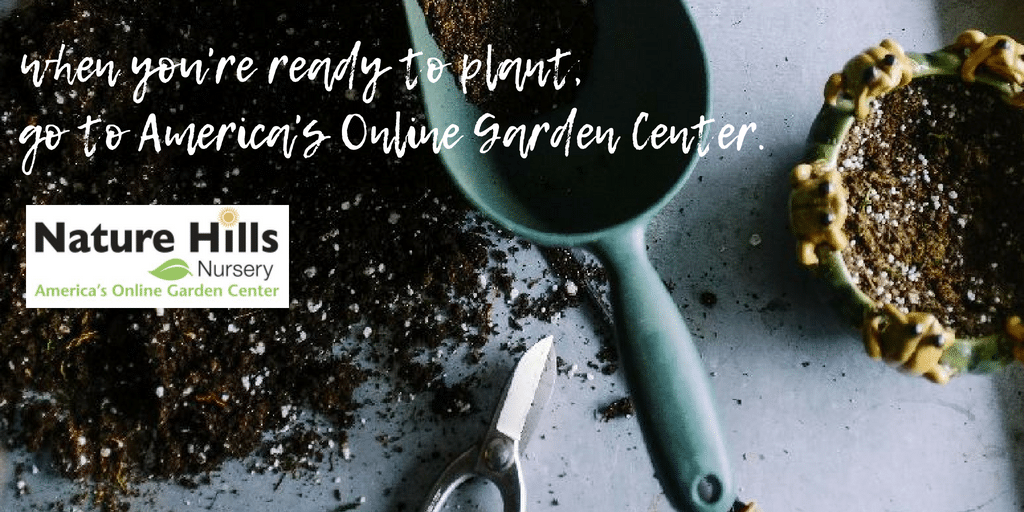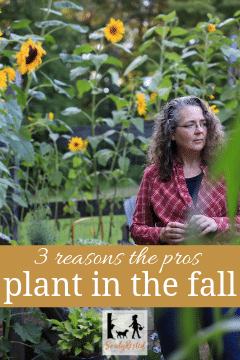Last Updated on November 17, 2019 by Michelle
Many people don’t think about planting shrubs in the fall, especially in the colder regions of the country, but guess what? I did something right recently. Turns out I wasn’t crazy for wanting to plant some lilacs this fall. Read on for lots of confirmation if you’re considering planting a shrub or two this fall…

This post contains affiliate links.
I reached out to NatureHills.com and asked if I could still order lilacs and plant them in New England in the fall. I thought they might tell me I was crazy, but hey, they wouldn’t be the first people to declare this insight.
It turns out, one of their horticulturalists, Ed Laivo, got right back to me and told me that, “Actually, Michelle, fall planting can be very beneficial for you and the plants.” Score one for me! So I ordered my lilacs–which by the way was really hard. Cause I couldn’t choose! I was shocked at the choices there are. So next post I’ll delve into more details about lilacs specifically. But for today, I asked Ed if he would be willing to write up a guest post for you all, cause obviously I’m no expert on this topic. He not only was more than willing to help, but he had this post–and a really awesome one about Growing & Caring for Lilacs–to me in just a few days…
Did you catch that? Ed is visiting back here tomorrow. And if you’ve been following my lilac fascination this summer… if you’ve been thinking you might need a lilac or two… boy will you LOVE what Ed is sharing here tomorrow. But for now, here are Ed’s insights into fall shrub planting. Cause, well, fall has hit New England in full swing, Bill is marking new sugar maples that he will be tapping (read more here or you can pin the info here), and I still wanna plant some lilacs (so I can make more lilac syrup as well as maple syrup next year)!

So, without further ado, let me introduce you to Ed:
Ed Laivo has over 40 years of extensive varied experience in plant production and nursery management. Ed is a fruit tree and edible landscaping specialist who has been involved with the introduction or reintroduction of many popular varieties of fruits including figs, Pomegranates, and Blueberry varieties to the home gardener, introducing techniques to better adapt these to the backyard grower. Ed has been a frequent guest on numerous TV and radio shows, as well as a popular writer, contributing insightful articles to many popular gardening periodicals.
Three Reasons to Plant Trees and Shrubs in the Fall
Thanks for asking me to write something up for your readers, Michelle.
Basically, there are 3 reasons that planting shrubs in the fall in areas with shorter growing seasons is a great idea:
1. Fall soil is warm.
For those of us in areas with shorter growing seasons and early cold snaps we often times forget about utilizing the warm soils of fall to generate new roots for new plantings. Fall brings with it more plentiful rainfall and the plants installed now will not use as much water as they are shutting down for the year. A good soaking at planting, and a few additional waterings will be all that is necessary before the ground freezes up.
2. Snow is the perfect insulator.
Planting in colder regions has the added benefit of snow, the perfect insulator. There is nothing better than protecting your plants from the cold drying winds than a thick blanket of snow.
Remember that not all plants need to be cut down in the fall, in particular roses, grasses, and perennials. Leave these plants uncut to catch the snow, which will better insulate the plants. In the spring cut back the tops.
3. Head starts are always good.
Fall planting Lilacs will give them a springtime head start because they put on new roots in fall. When spring rolls around, the plants grow like they have already been there for an entire season.
Three Tips For Planting Trees and Shrubs in the Fall
- Protect trees from deer and rodents. Think about deer and rodent protection for your newly planted plants as well. Young trees and fruit trees should have their trunks wrapped with metal screening or hardware cloth from the ground up to the first branches. Screening prevents deer rubs, rabbits or rodents from eating any of the young bark off of your trees. Screening is best as it allows the trunks to breathe and allows moisture to dry up.
- Water new evergreens until the ground freezes. Young evergreens planted in the fall should be watered up to the time the ground freezes. This is very important to prevent winter burn on evergreens.
- Water new deciduous shrubs too. Deciduous shrubs planted in the fall will put on new roots too. Water well when planting and as needed until the leaves drop off and the temperatures freeze.
Wow! Great stuff. A huge thank you to Ed for sharing his knowledge today.
So there you have it. My new lilacs are in the ground and looking happy. Follow along on youtube for an upcoming DIY video of my unboxing of these beauties and how I decided where on the homestead to plant them.
Next spring I’ll be making so many lilac delicacies I may wind up being called the “lilac queen” along with my title Jill Winger bestowed upon me years ago that, well, kinda “stuck,” of “maple queen.”
Go here to check out my book, Sweet Maple, (aff link) which bestowed that regal title. But truth be told I’m really not very regal in any area of my life. 😉
Lilac sweeteners? Ummm, yes!
Here’s one about lilac sugar.
Then there’s lilac simple syrup. And that post includes a full video tutorial.
Go here for how to download sweet printable gift tags for lilac simple syrup.
Then there’s lilac pancake syrup.
Oh, and absolutely don’t miss the lilac-infused honey.
And I’m guessing you’d like these too:
Here I share my favorite-of-all-time Lilac Blueberry Kombucha recipe.
And this post is where my lilac obsession all started. With one of my favorite history lessons ever.
Enjoy fall!
Now get out there, enjoy a crisp fall day, and for goodness sakes, plant a beautiful shrub. Next spring you’ll be glad you did!

Let the heavens rejoice, let the earth be glad;
let the sea resound, and all that is in it.
Let the fields be jubilant, and everything in them;
let all the trees of the forest sing for joy.
Psalm 96: 11-12
Glance at my Resource Page if you’d like to get a glimpse of all the supplies I use and recommend for everything from gardening, to homeschooling, to chicken care, to nature journaling, to maple syrup making.
And hop over here to find out why SoulyRested was considered to be one of the Top 20 Must-Read Homesteading Blogs of 2018.
I’d love to connect!
To find me in some other neck of the woods, just click any (or every!) icon below:
And please follow along!
Please take a second to follow along here on SoulyRested to catch up on a few of my memorable mishaps, discover fascinating things about my centuries-old farmhouse, glean a little parenting/homeschooling insight from this momma who’s been failing at the effort for almost 2 decades, or enjoy the inside scoop on the secrets other legit homesteaders might not tell you.
I hope my focus always encourages you, because simple joys require hard work. Let’s face it, we all need all the encouragement we can get! As soon as you subscribe (in the box at the end of this post), you’ll have immediate access to my Resource Library, which includes many useful printables–including ones about crafts and how to clean a braided wool rug–my FREE EBOOKs, and amazing recipes for things like whoopie pie cookies, maple sap switchel, and my grandmom’s perfect pie crust.
If you already ARE a subscriber, just hop over to the Resource Library here and enter your personal password. (If you don’t remember your password, no fear, we always include a personalized reminder in every Thursday email, “Hard Work, Simple Joys.”)








